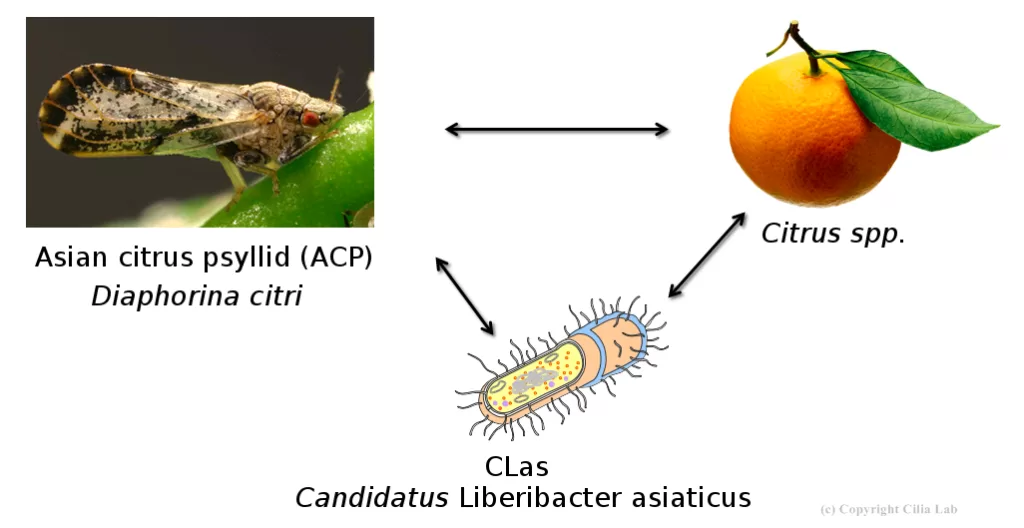Understanding the Citrus Greening Challenge
Citrus greening disease, also known as Huanglongbing (HLB), continues to pose a significant threat to the global citrus industry. This bacterial disease, spread by the Asian citrus psyllid (ACP), affects all varieties of citrus trees, leading to reduced fruit quality, decreased yields, and eventual tree death. The economic impact of HLB has been severe, causing billions of dollars in losses worldwide, particularly in major citrus-producing regions like Florida.

A Novel Approach to HLB Research
A recent study published in Nature Scientific Reports has provided new insights into HLB, utilizing innovative techniques in metabolomics and molecular mapping. This research, conducted by a team of specialists including scientists from Arome Science, offers a fresh perspective on this devastating disease.
Key Findings and Their Significance
The research team employed a combination of mass spectrometry-based metabolomics and 3D molecular mapping to visualize complex chemical changes within HLB-infected citrus trees. This approach led to several significant discoveries:
- Flavonoid Biosynthesis Disruption: The study revealed that HLB significantly disrupts flavonoid biosynthesis in citrus trees, a key factor in the disease’s progression and the tree’s declining health.
- Feruloylputrescine as a Biomarker: Researchers identified a correlation between increased levels of the polyamine compound feruloylputrescine and the severity of HLB symptoms. This finding opens new avenues for potential early detection methods.
- Metabolic Pathway Alterations: Evidence suggests that Candidatus Liberibacter asiaticus (CLas), the bacterium associated with HLB, may manipulate the plant’s metabolism by converting ferulic acid to feruloylputrescine, potentially suppressing the plant’s natural defenses.
- Identification of Bactericidal Compounds: In vitro bioassays demonstrated that ferulic acid and bioflavonoids exhibit strong bactericidal effects against CLas, comparable to antibiotics, which are currently the only therapeutics used in field.
Implications for Future Research and Treatment
This research offers a potential new treatments, which has multiple advantages: the proposed molecules are plant-derived, non-toxic, and can be easily sourced. This research further provides valuable insights that could guide future studies and potential treatment development:
- Enhanced Understanding: The study significantly advances the understanding of the complex interactions between CLas and its host plants, providing a new framework for studying plant-pathogen interactions at a molecular level.
- Potential for New Diagnostic Tools: The identified metabolic markers, particularly the correlation between feruloylputrescine levels and disease severity, could lead to the development of new diagnostic tools for early HLB detection.
- Directions for Treatment Research: The bactericidal effects of natural compounds observed in the study could inspire new directions in treatment research, potentially leading to more sustainable alternatives to current antibiotic treatments.
- Broader Applications: The innovative methodologies used in this study demonstrate a powerful new approach to studying plant biology and plant-pathogen interactions, with potential applications beyond HLB research.
The Role of Metabolomics Services
The success of this research underscores the importance of advanced metabolomics techniques in agricultural and plant pathology studies. Arome Science, co-founded by several of the study’s researchers, offers Metabolomics Services that can provide similar in-depth analyses for various agricultural and biological research projects.
These services can help researchers and companies gain deep insights into metabolic processes, potentially unlocking new possibilities in their fields of study. Whether it’s for crop improvement, disease resistance research, or other agricultural applications, metabolomics can offer valuable data and insights.
Conclusion
Continued research and collaboration in this field are crucial for developing effective strategies against citrus greening disease and other agricultural challenges. This study marks an important milestone in that ongoing effort.
For those interested in leveraging similar metabolomics techniques for their research or agricultural needs, Arome Science’s Metabolomics Services offer state-of-the-art analysis and expert interpretation. To learn more about these services, visit our Metabolomics Services .


